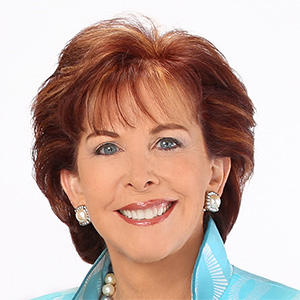Terry Savage: Choosing value in college selection
There is no doubt that a college education is a key ingredient in future success — although these days it’s harder to find a skilled plumber or electrician than a liberal arts grad driving an Uber.
The cost — and value — of an education over the long run is something parents should start thinking about when their children are in high school. Sophomore year is not too soon to start planning for college applications, testing, acceptance and financing.
Done correctly, a college education will pay dividends over the long run. But done blindly, a college education can become a lifelong burden — as many have already realized. Here’s how to start the process in a timely way.
Almost every high school has a guidance officer dedicated to helping kids who demonstrate a desire to go to college to find a way. But those counselors are often overworked and under-resourced, so your student should reach out for help. It’s also important for your child to build a relationship with teachers who can write a critical letter of recommendation.
There are also private — and expensive — college counselors who will advise your family and child on everything from choosing schools where they will fit to writing essays for their applications to test preparation. Eva Dodds of RootCollegeAdvising.com says it’s important to start this process in the junior year of high school.
Speaking of tests, the most immediate issue on the horizon for 11th (and also 10th graders) is the PSAT test, given during October. It can qualify them for National Merit Scholarships. Taking the test is good practice and may lead to improved scores on retests through a variety of testing help sites like PrepExpert.com.
High school seniors will want to register for the SAT test at CollegeBoard.org. While not all schools require SATs, many private scholarships do want to see those numbers. Taking the test in fall allows time to learn the procedures and retake the test again later to earn a higher score.
Parents have a tough time saving enough for college. According to the latest survey by SavingforCollege.com, about 5% of families had no savings. Of those that had, just over 30% had saved $10,000 or less, 25% had saved between $10,000 and $30,000, and about 40% had saved more than $30,000.
529 College Savings Plans now have a total asset value of over $450 billion, with an average 529 account balance of $27,741. But there is plenty of help for those whose families couldn’t afford to save.
The basic starting point for those who are entering this challenge is FinAid.org. This website gives helpful and unbiased advice about everything from free Federal money (such as Pell Grants available to low-income families) to the rules for both Federal and private student loan programs.
Your next stop — as early as sophomore year — should be Scholarships.com (or several other websites) that will match you with opportunities for free money. Many of these larger scholarships require some community service as well as essays. So the planning should start early as your high schooler participates in clubs and activities.
Finally, it’s time to take a new approach to choosing colleges to apply. Instead of sorting schools into prestige “reach” schools and “safe” schools to which you are likely to be accepted, take a look at a different metric: value for your money.
That’s the ranking developed in a nationwide survey by Washington Monthly (WashingtonMonthly.com). They have just released their 2024 “Best Bang for the Buck” ranking of colleges and universities. The rankings are based on “the schools where students of modest means get the most for their money.”
Washington Monthly grades a long list of schools based on real costs for lower-income families (after tuition assistance), graduation rates and median earnings nine years after entering college. The results are divided into geographic areas — a roadmap for those seeking to attend a worthwhile college near home — or far away.
Washington Monthly editor Paul Glastris points out that many prestigious schools have large endowments, and can offer significant financial aid to low and middle income families. Their degrees have a high earning power. But the survey also reveals other, smaller schools that may cost less and give even better financial results with less debt burden. It’s worth checking the list. You’ll want to avoid those at the bottom of the list — the worst bang for the buck.
Families of high school students need to start doing their homework for getting into college right now — starting in sophomore year. It’s worth a lifetime fortune. And that’s The Savage Truth.
========
(Terry Savage is a registered investment adviser and the author of four best-selling books, including “The Savage Truth on Money.” Terry responds to questions on her blog at TerrySavage.com.)
©2024 Terry Savage. Distributed by Tribune Content Agency, LLC.












Comments